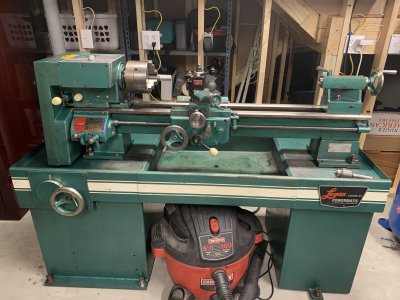So I finally started actually making chips with my project lathe this past week as I've "found some time" as of late. Last night I was turning a part down to diameter and was really perplexed at what was happening. I always try to sneak up on final dimensions to get them right on. I was coming up on my final diameter and was within 0.080 or so. I was dialing in 0.010 per pass but it was consistently taking 0.003. So, I backed off and checked on the graduations to make sure I understood how the dial was supposed to work. As I figured, the indicated depth on the crossed dial is designed to indicate the diametric change per cut, so a 0.010 indication is taking 0.005 in depth, but 0.010 in diameter. I confirmed it with a precision ruler and the dial was accurate on large scale movements. So, my 0.010 cuts should have taken 0.010 in diameter. What I noticed was this. I always make sure to take out any backlash in the gears before I start to cut. I would start my cut by touching off on the part and setting the dial to 0. Then, without backing off, dial in 0.010 and take a pass. I stopped the machine, measured, and the cut was 0.003 in diameter change. Without touching the dial setting, I touched off on the part again and instead of the dial indicating 0.010 where I set it, it indicated 0.003. So, something is happening to affect the amount being fed. I hope this makes sense. Does anyone have any ideas as to what is happening and how I can fix it? DRO is not an option, I tried installing one but the hardened steel on the saddle broke 5 bits trying to drill for taps and I never even got to tapping. It's hard to make precision parts when you don't trust the dials though.
Thanks!
Dave
Thanks!
Dave


